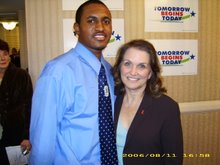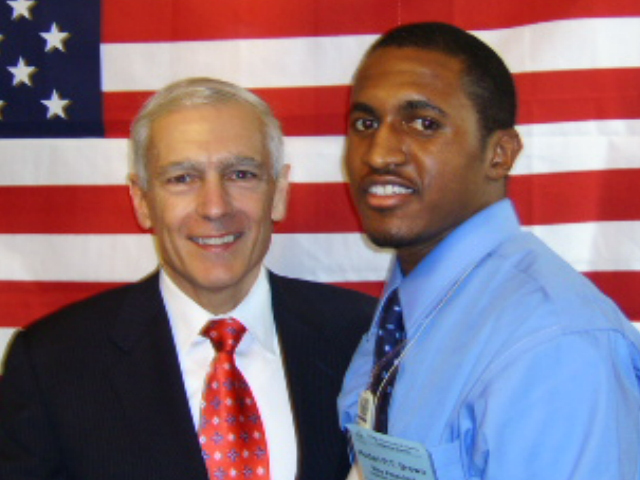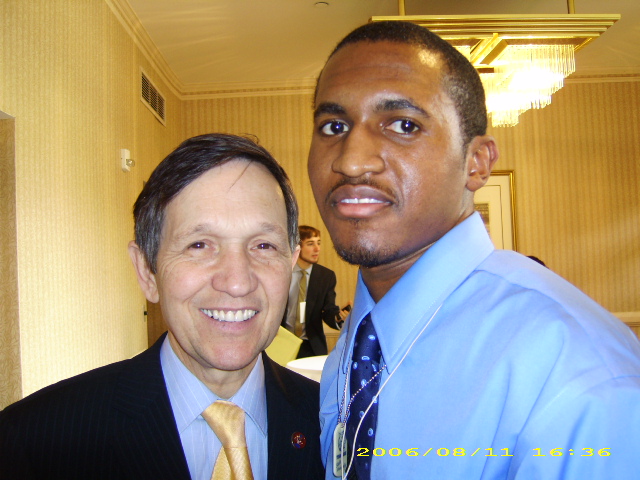
Employers shed 216,000 jobs in August, the Labor Department said Friday. That was 9,000 fewer than expected but a far cry from the job creation required to rejuvenate the economy: about 125,000 new jobs each month just to keep the unemployment rate from increasing. The unemployment rate rose three-tenths of a percentage point since July, reaching its highest level since 1983, when it was 10.1 percent. Economists predict that the jobless rate will peak above 10 percent by the middle of next year.
At the same time, many analysts say the economy should grow by a healthy 3 to 4 percent in the third quarter, pulling the United States out of the longest recession since World War II. Most of that improvement, though, stems from auto companies and other manufacturers refilling their depleted stockpiles. Those inventories had plummeted as factories and retailers sought to bring goods more in line with reduced sales during the recession. Without stepped-up demand from consumers, any current economy growth might not last.
The Obama administration's $787 billion stimulus package of tax cuts and increased spending contributed to the improvement, along with the popular Cash for Clunkers program. The clunkers program provided up to $4,500 in rebates to consumers who traded in old gas-guzzlers for newer models. An $8,000 tax credit for first-time home buyers has also helped boost housing sales and stabilize prices, after years of declines.
Yet economists worry that none of that will be enough to sustain an economic recovery once the government's efforts fade. As job losses persist and the unemployment rate climbs, even people with jobs will remain anxious about losing them and about spending too much. Complicating the problem is that even people with good jobs are likely to remain tighter with their money for years to come. Having suffered deep losses in their home equity and stock portfolios, and still stuck with heavy debt loads, Americans will not spend as freely as they did before the recession.
Some economists even fear a so-called "double-dip" recession, which would cause the economy to shrink again next year. "That's one of the reasons why businesses are reluctant to hire people," said Sung Won Sohn, an economics professor at Cal State University, Channel Islands. "They're not at all sure the economic bottoming is for real." Gault does not foresee a double-dip recession. But he thinks that the economy, after growing at a 3.7 percent pace in the current quarter, will slow to 2 percent growth in the first three months of next year.
For now, the August unemployment report sketched a bleak portrait of the job market. The number of jobless Americans jumped by nearly 500,000 to 14.9 million. If laid-off workers who have settled for part-time work or given up seeking jobs are included, the so-called underemployment rate hits 16.8 percent last month. That's the highest such rate on records dating to 1994.
The number of workers who worked part time — because their hours were cut or they could find only part-time jobs — rose by about 300,000. As business improves, companies may switch many of those part-timers to full-time work before they add new employees. That's one reason why analysts expect the unemployment rate to keep rising. Companies are also squeezing more work out of fewer people. Productivity, a measure of output per hour worked, jumped 6.6 percent in the April-June quarter. It was the largest advance since the summer of 2003.
The report is likely to renew debate about the effectiveness of the Obama administration's $787 billion stimulus package. Administration officials say the program has already saved or created 500,000 to 700,000 jobs. Labor Secretary Hilda Solis said Friday that stimulus money is still being injected into the economy. "The recession has done more damage than could ever be fixed in half a year," Solis said.
Some analysts are pushing for more stimulus. Lawrence Mishel, president of the Economic Policy Institute, argues the federal government should create more jobs and provide tax credits for companies that hire. "Until we get robust job growth, and a rapid path to low unemployment, we need to do much more," Mishel said.
Alan Krueger, the Treasury Department's chief economist, said Friday that the administration is considering whether some programs, such as extended jobless benefits or support for housing or other parts of the stimulus program, should be further extended. But he said no decisions had been made. One modestly bright side for those with jobs: Earnings ticked up, and the number of hours worked remained above a recent record-low.
On Wall Street, stocks rallied. The Dow Jones industrial average added about 77 points, and broader indexes also moved up. The recession has eliminated a net total of 6.9 million jobs since it began in December 2007. Job cuts last month remained widespread across many sectors. The construction industry alone lost 65,000 jobs. "It doesn't look like a whole lot of those 'shovel-ready' projects have been started," Joel Naroff, president of Naroff Economic Advisors, wrote in a note to clients.
Factories cut 63,000 jobs. Retailers pared 9,600. The financial sector eliminated 28,000 jobs, and professional and business services dropped 22,000. Even the government sector shed 18,000 jobs, as the U.S. Postal Service cut 8,500 positions, and state and local governments laid off teachers and other school workers. Temporary-help services cut 6,500 jobs, an unfortunate sign because employers are likely to hire temp workers if they need more labor before turning to permanent hires.
Health care and educational services were the only bright spot, adding 52,000 workers. Still just early last week Vice President Joe Biden proclaimed success beyond expectations for the $787 billion economic stimulus, but his glowing assessment overlooks many of the program's problems, including delays in releasing money, questionable spending priorities and project picks that are under investigation.

In a speech aimed squarely at Republican criticism and public skepticism over the costly program's effectiveness, Biden said accomplishments over the past 100 days provide proof of promises kept when he and President Barack Obama began rolling out the plan earlier this year. "The Recovery Act is doing more, faster and more efficiently and more effectively than most people expected," he said.
The stimulus program includes tax cuts, billions for Medicaid and unemployment benefits, and a massive federal investment in education, environmental projects, technology and traditional infrastructure work. The administration has struggled to make the case that the huge spending program has delivered real economic recovery at a time when the nation's unemployment rate threatens to top 10 percent.
Biden, Obama's chief stimulus cheerleader, proudly pointed to more than 2,200 highway projects Thursday funded by the program, but didn't mention the growing frustration among contractors that infrastructure money is only trickling out and thus far hasn't delivered the needed boost in jobs. "It is difficult to understand why more communities aren't moving to put their stimulus funds to work while they are experiencing these kinds of job losses," Stephen E. Sandherr, head of the Associated General Contractors of America, said in a statement this week. "Coping with the red tape required by the stimulus ought to be worth it to help put neighbors and friends back to work."
The problem is with money for building projects, not roads and highways, Sandherr said. Biden noted 192 airports targeted for improvements with stimulus money, but made no reference to the investigation launched after a federal watchdog raised concerns about how the projects were selected. Transportation Department Inspector General Calvin Scovel said last month he will examine the Federal Aviation Administration's process for selecting programs for the $1.1 billion in grant money. His announcement came after his office discovered that the Obama administration used stimulus money to pay for 50 airport projects that didn't meet the grant criteria and approved projects at four airports with a history of mismanaging federal grants.
And Biden praised the more than 2,400 military construction projects paid for with stimulus money, but ignored the millions of dollars in savings the Defense Department lost because it hasn't competitively bid many of the jobs. The Defense Department frequently awards no-bid work to small contractors for repairs at military bases under the stimulus, costing taxpayers millions of dollars more than when businesses compete for the work, an Associated Press analysis of 570 such contracts found.
Biden exercised some restraint in his praise for the stimulus' impact. He took a more cautious approach, for example, when asked if his declaration of stimulus success means Americans can now rethink the common view that government is wasteful and inefficient. "I think it's too early to make that decision, to be very blunt about it," he said. And Biden didn't attempt to credit the stimulus alone for signs of broad economic recovery, saying it was one of several government actions that are helping. "Had we done just this and not done the incredibly unpopular thing of bailing out the banks, had we had done this and tried to deal with stabilizing the housing market, had we done only this we would not be where we are," he said.
But most of Biden's remarks focused on what he argued is evidence of success with the stimulus, even if his examples were questionable. In making the case that the recovery program was not just economically sound but also good policy, Biden noted that transportation money was replacing unsafe bridges. "It is worthwhile to take some of those 5,000 bridges out there that are ready to collapse, follow what happened in the upper Midwest, and fix them," he said.
Still most states are spending stimulus money on bridges that are already in good shape, another AP analysis found. Of the 2,476 bridges scheduled to receive stimulus money so far, nearly half have passed inspections with high marks, according to federal data. Those 1,123 sound bridges received such high inspection ratings that they normally would not qualify for federal bridge money, yet they will share in more than $1.2 billion in stimulus money, the AP analysis published in July found.
The vice president's speech is part of a concerted White House push in advance of the 200th day of the stimulus act on Saturday. Five top administration officials also were speaking about the law's benefits on Thursday in appearances in Arkansas, Virginia, Illinois, California and Minnesota. However the truth of the matter is that the economic recovery efforts have fallen short of what it was intended to do for the economy. While the White House can push and say that things could have been worse without it, we actually don’t know how bad things could have got since much of the stimulus has not been implemented and that which was implemented hasn’t changed the jobless rate in this nation which has increased. While the number of jobless claims have fallen, there are still a huge chuck of Americans unemployed and that is why the economic stimulus package as it was packaged is not working as the White House intended it to do and which is why they continue to say they underestimated or miscalculated just how bad the economy they inherited really was.
While all of that sounds good in theory, it can only last for so long so if the jobless rate doesn’t get back down to normal which is around 5% by next Fall than many Americans need to begin to question the Obama administration and their rhetoric because they can’t continue to blame things on the previous administration. It comes a time in all of our lives where we have to stop blaming others and we need to start accepting responsibility which the White House hasn’t really done yet but sooner or later they will have to start rather than simply blame the previous administration which to this point they have done a lot of the blame game. Thus the economy recovery efforts are just as murky and unclear as it was 9 months ago as it relates to job creation in this nation and updating America’s infrastructure which were two of the big reasons for the Economic Recovery Act when the White House advocated for Congress to pass it back in February.


























No comments:
Post a Comment